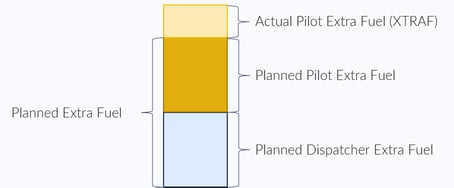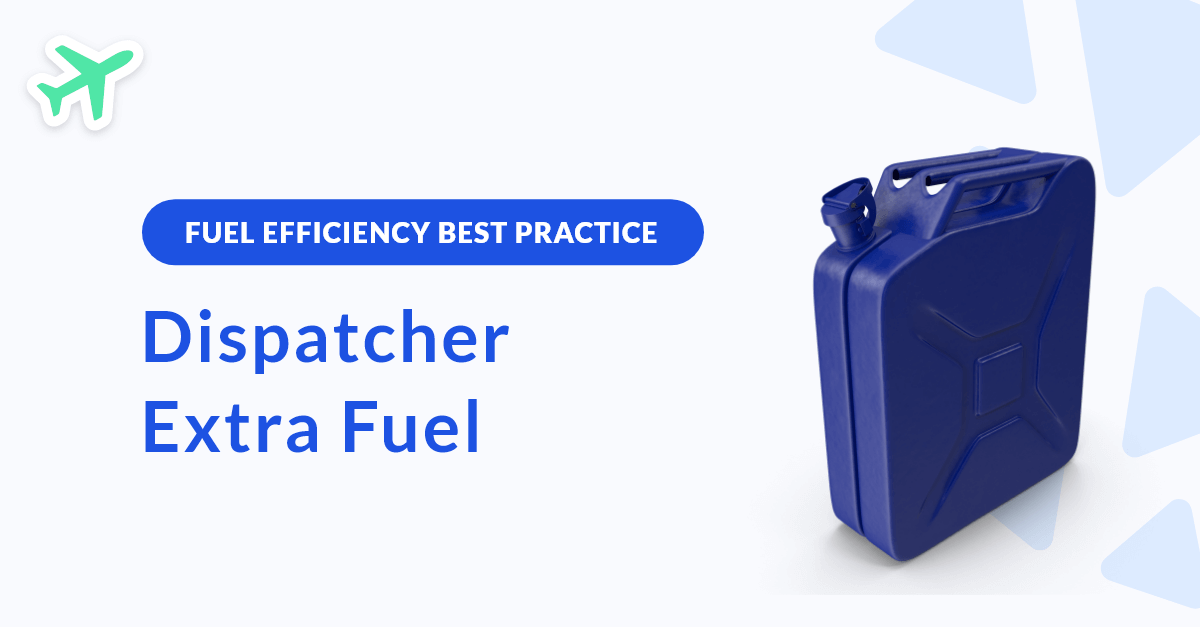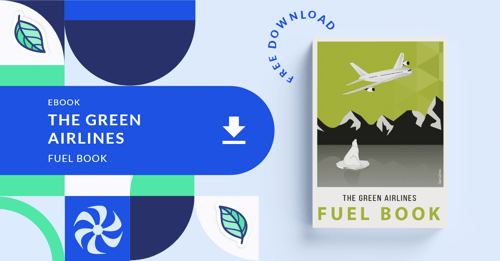Reducing dispatcher extra fuel without compromising safety
To run safe operations, dispatch must ensure that an aircraft carries enough fuel in case of any unforeseen changes in its flight plan, such as delays or weather-related issues. However, carrying extra fuel adds weight to the aircraft, increasing fuel consumption and total emissions. Fortunately, advances in data analysis have made it possible to optimize the additional fuel needed while maintaining high safety standards.
What is Dispatcher Planned Extra Fuel?
The airline dispatch office prepares the flight plan, which outlines the minimum fuel required to travel from one airport to another. Dispatchers calculate the fuel needed for a flight based on aircraft performance, presence of Minimum Equipment List items (MEL), planned route, weather conditions, and all legal reserves for contingency, holding, alternate, etc. They also plan extra fuel to ensure the safety of the flight.
Often, the responsibility for ensuring the safety of a flight rests solely with the captain. For this reason, Pilot extra fuel can be added at the captain's discretion to the initial flight plan based on their judgment.
Related Article >> How to reduce pilot extra fuel without compromising safety?
Nevertheless, under specific regulations or airline policies, both dispatchers and pilots share the responsibility for the safety of the flight and are directly involved in adjusting these margins. In this case, the planned extra fuel is split into two categories: dispatcher and pilot, as shown in the graph below:

Planned extra fuel is split into two categories: Dispatcher extra fuel and Pilot extra fuel.
Typically, North American airlines, under the jurisdiction of the Federal Aviation Administration (FAA), involve the dispatcher in the legal responsibility of the flight. Other airlines operating outside the USA, such as Korean Air have also decided to engage their dispatcher this way.
The cost of unused Dispatcher Extra Fuel
Planning the right amount of extra fuel before the flight is not an easy task. On the one hand, insufficient extra fuel can compromise safety. On the other hand, too much extra fuel incurs significant additional costs, not just financially but also in fuel burn and CO2 emissions.
The reason for this is quite simple. Any extra fuel that remains unused upon landing must be carried throughout the entire flight, which increases the aircraft's weight and, therefore, fuel consumption. To compute the impact of carrying this excess fuel, one must multiply the unused aircraft fuel by the cost of weight (CoW), representing the cost of carrying the fuel. This situation is particularly problematic when the added weight of carrying too much extra fuel directly generates consumption of the extra fuel itself. It could have been avoided if less fuel had been carried in the first place.
A good rule of thumb to compute the cost of weight is to consider that it represents about 3.5% per flight hour. For instance, 300kg of unused dispatcher extra fuel during a 6-hour flight will cost 60kg of additional fuel to carry to the destination.
Related Article >> How to use the cost of weight to be more fuel efficient?
In situations where the extra fuel can be justified by a clearly identified root cause, incurring additional costs is acceptable and necessary. However, when no root causes are identified, it is essential to scrutinize any unjustified extra fuel in order to optimize it. Remember that the trip fuel and reserves are already in place to address many scenarios.
In this regard, measuring and tracking the extra fuel introduced by the dispatcher is necessary for better flight efficiency while continuing to ensure high safety levels.
How to optimize the amount of Dispatcher Extra Fuel taken?
The foundation of any fuel optimization initiative is confidence in the data used for calculations. Dispatchers must trust their flight planning system and actual operations to consider reducing the extra fuel.
To boost this confidence and enable dispatchers to contribute to the fuel efficiency policy, here are a few guidelines:
- Firstly, identify and understand why the planned extra fuel is necessary and establish the direct root causes.
- Categorize the reasons for the planned extra fuel using digital analysis software to find inefficiencies.
- Communicate accurate fuel statistics, including fuel at landing and unused planned extra fuel. To do so, dispatchers must track and measure this data using their fuel efficiency tools, such as SkyBreathe®. The fuel management tool has a dedicated best practice, “Dispatcher Extra Fuel” (DXTRAF). It produces a simple and accurate view of the fuel burned due to carrying it beyond what is needed and how it could be optimized to achieve potential savings.
- Adjust the flight planning system according to these statistics.
- Use accurate and actual data to challenge established habits.
References:
- IATA. (2011). Guidance Material and Best Practices for Fuel and Environmental Management (5th edition ed.). Montreal, Geneva.
LEARN MORE
Discover more airline fuel-saving tips & best practices in The Green Airlines Fuel Book >> Download the Ebook.



